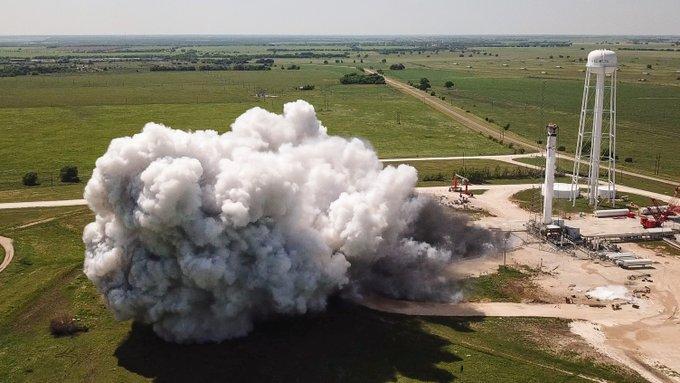SpaceX’s Launch: Doing The Right Stuff

On May 27, the world watched as two American astronauts waited for liftoff from Cape Canaveral.
Bob Behnken and Doug Hurley were set to ride the SpaceX Crew Dragon capsule into orbit and rendezvous with the International Space Station (ISS). The Falcon 9 reusable launch vehicle was taking on liquid oxygen fuel, the president and vice president of the U.S. were standing by and millions of viewers were watching.
After weeks of anticipation and media buildup, the day had arrived. Everyone watching, including my family and me, was being reminded constantly about the importance of the moment: The first launch of American astronauts on an American rocket from American soil since the retirement of the space shuttle program in 2011.
Then, nothing happened.
Actually, that’s not true: Something very important happened . . . that resulted in nothing happening.
Seventeen minutes before the scheduled 4:33 p.m. EDT launch, controllers scrubbed the mission. Though the weather, which had been questionable all day, was clearing, all required minimums would not be met by T-0 seconds. The astronauts and their rocket were staying put.
“People say to me, ‘With all of the attention of the world on this launch, with all of the VIPs coming, are you going to feel pressure on this launch?’” NASA Administrator Jim Bridenstine recalled for the media. “If we are not ready to go, we simply do not go. I am proud, so proud, of our teams working together to make the right decision in this particular case.”
During the first round of sessions for ARSA’s Human Factors training series, I trained on the impact of pressure on performance in aviation maintenance. The element is part of the “the Dirty Dozen,” the short list of key factors affecting human performance, so it is given special attention.
A key aspect of that session was challenging the assertion that anyone can “work best under pressure.” We’ve all had friends or colleagues who insist they always come through “better” when expectations, time constraints, resource limitations or other “human” factors place the highest strain on their ability to meet outcomes.
Is that true? Maybe, if you are conditioned to perform that way as the NASA team is, but in reality, most of us don’t reach those heights.
Higher states of “arousal”—the measurement used by psychologists Robert Yerkes and John Dillingham Dodson in 1908—will produce heightened attention and care and improve performance results up to a point. In particular, the Yerkes-Dodson “Law” suggests that for simple tasks depending on reflexes or instinct (running from imminent danger, perhaps), execution improves as arousal mounts.
There are few simple tasks in modern life, let alone in aviation maintenance. For difficult activities, there are points of pressure beyond which performance degrades. Maintenance of aircraft requires careful attention, effective working memory and clear decision-making. Put simply: A little pressure keeps you focused; a lot turns you into a mess.
“It might surprise you that nobody performs better under pressure,” explains the Institute for Human Health and Potential, going beyond Yerkes and Dodson by focusing entirely on higher functions. “Regardless of the task, pressure diminishes our judgment, decision-making, attention and performance.”
Accepting that few are at their best under pressure, consider how to mitigate its effects on performance: prioritize and coordinate. Both individuals and organizations should establish—and consistently review—mandatory work standards and the resources required to meet those outcomes. In pursuit of those goals, all persons must focus on their roles (“stay in your lane”) and communicate status and needs according to established plans and procedures.
Bring those mitigations back to the launchpad and the “no-go” decision made on May 27. The engineers and technicians relied on specific safety standards, communicated issues and—most important—relied on each other to critically adhere to the requirements of a successful launch. If the weather team says no, the mission is scrubbed—no matter the external pressures produced by the president, the media and the world.
So we all had to wait. Air Force One flew back to Washington, the media packed its cameras, viewers around the world returned to other programming, and Bob and Doug boarded their vehicle for a very earthbound ride home. Everyone came back to do it again on May 30. At 3:22 p.m., the commercially built rocket and crew capsule were successfully piloted into orbit and on course for rendezvous with the ISS.
The launch was a rousing success, a grand event at the end of May. The reason why? Because a few days earlier . . . something even grander happened: nothing.
Brett Levanto is vice president of operations of Obadal, Filler, MacLeod & Klein, PLC and provides strategic and logistical support for the Aeronautical Repair Station Association.




